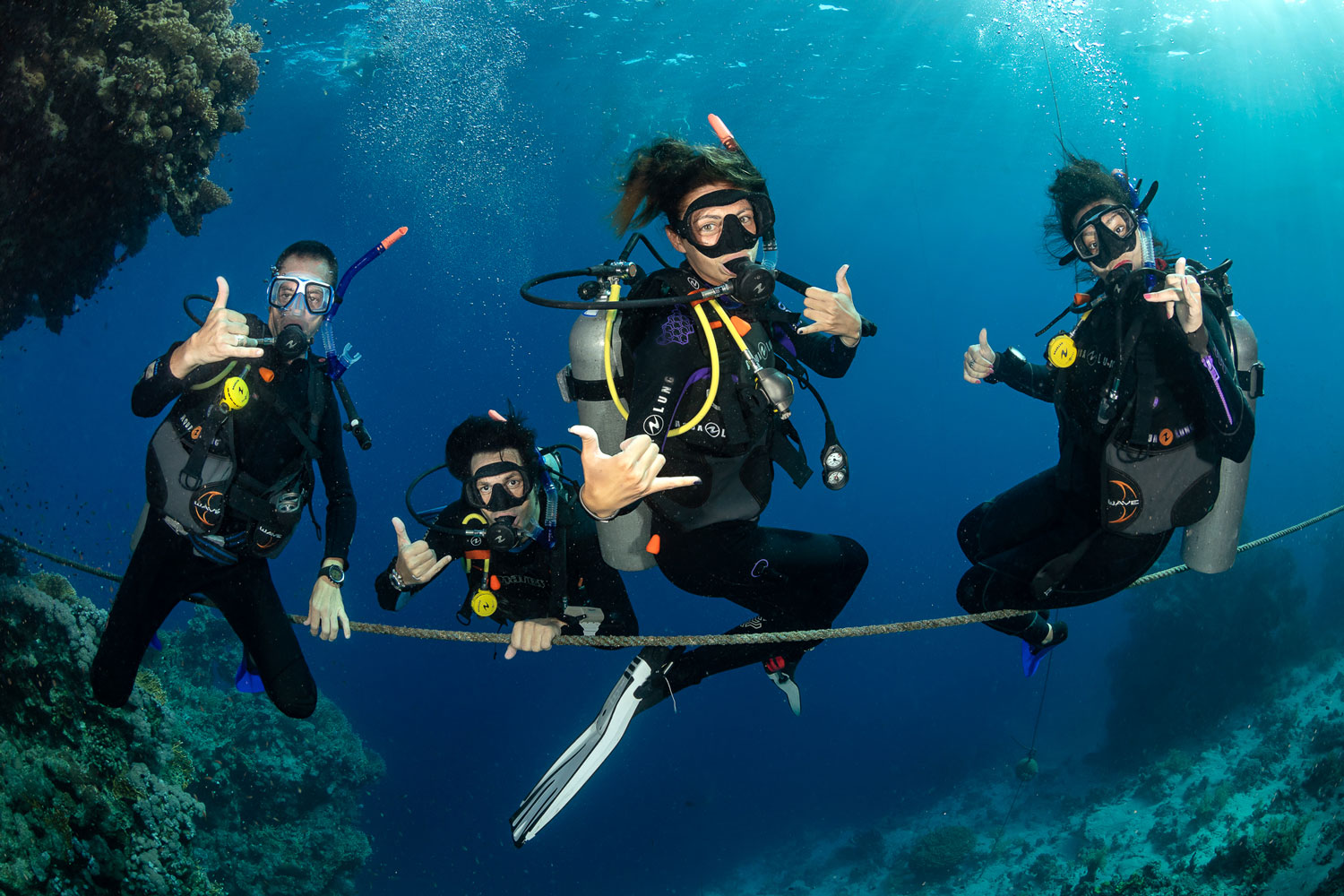Prepared diver
Scuba Equipment care – Drying and storing your gear
After reviewing how to best clean and rinse your gear, let’s have a closer look at drying and storing it.
Of course, the following are general rules and tips, and do not replace user manuals of any equipment, so you may also want to consult those for more specific instructions.
How to Properly Dry Your Gear
Yes, the sun will dry your kit faster, but prolonged exposure to UV will make colours fade (bleaching effect) and make them look worn and shabby, earlier than you think. Sunlight can deteriorate neoprene suits, hoses, latex or rubber seals, and all plastic materials, O-rings / gaskets and even zips. In high temperatures, neoprene will also lose its elasticity.
Hang your kit outside, ideally in the shade, then bring it back inside. Drying materials in a well-ventilated room is an option too, but careful not to place them next to heaters, to avoid fire hazard and damage to your equipment.
Dry neoprene materials inside/out to protect the outer layer. Do not use a tumble dryer: it will only reduce their life spans. Specific electric heating elements are available to dry boots and gloves, but attention is needed to avoid overheating and fire.
Hang your Dry suits (neoprene or trilaminate) in upside-down position, with the use of an appropriate hanger. This position – either inside or outside – will allow any remaining water to drain.

Coming to the BCD, the outside isn’t such a problem, but drying the inside is another story. The easiest way is to inflate the BCD and drain any remaining water through inflator hose or dump valves. Repeat a couple of times for best results, then leave the BCD inflated and let it dry. Treat DSMBs similarly: unroll them and hang them partially inflated.
Some parts of diving masks – as the one between nose and glass – are prone to calcium deposits. Dry these parts using a cloth or towel, and extend their life span.
Fins are more resistant, but don’t like extreme heat either. While drying in the sun, avoid placing other materials on top of them. Fins can change form and get curved when subjected to heat, and this can affect their efficiency underwater.

Storing it the right way
Always store materials in a cool, dry place, protected from sunlight and high temperatures – above 49°C. Keep them away from any source of ozone, chlorine or exhaust gas, and avoid contact or exposure to oil, solvents, gasoline and chemicals.
Keeping your BCD partially inflated when stored is good practice, also using special hangers where you can attach regulators. Regs can also be places in a bag or box, but always make sure hoses are not tightly bent. Protective regulator bags for storage and transport will keep this precious piece of equipment safe.
Before storing them, make sure dry suits are actually dry, with no trace of humidity inside or outside. It’s best to hang them upside-down (zip closed) using a specific heavy-duty dry suit hanger, which avoids pressure points on the shoulders, or store them lying flat – no heavy objects on their top to avoid kinks or punctures! Limited space? Just avoid folding or bending the zip, as this could damage a crucial (and expensive!) part of your suit. Keep zips clean, and apply a suitable lubricant. Use unscented talcum on latex seals, as they can easily deteriorate, stick together, and ultimately brake.
Store masks and snorkels separately, preferably in their own boxes, protecting their silicon components. The same applies to computers, a precious piece of equipment that you want to keep safe from harm.
Remove batteries from diving torches and lights before storing them, especially for longer periods. Batteries can leak and their acid will damage your equipment – Here you find a specific article on how to transport them when travelling!

What about cylinders? Avoid moisture from getting inside the cylinder, even if it’s difficult to ensure, as it partially depends on the filling installation used. What you can do is avoiding to store tanks completely empty, thus leaving some pressure inside. Even small amounts of inside moisture can cause corrosion, so don’t store them on their side, as walls are thinner than the bottom. Place cylinder in upright position, properly secured to avoid falling. Should it fall, the fact that it’s almost empty does not make it safer, as valves can get damaged, and cause severe accidents and injuries when refilled.
Do not keep cylinders full if you plan to store them for a longer period: over time, oxidation might reduce the oxygen percentage inside.
Use a cylinder cap to prevent dust or impurities from getting in the valve or even into the first stage (or its sintered filter). This is especially important when using enriched air mixtures and oxygen clean materials.
Ready to use?
Cleaning, drying and storing your gear doesn’t make it automatically ready to use again. In our next article we will take a closer look at how to make sure your equipment is ready to be used.

